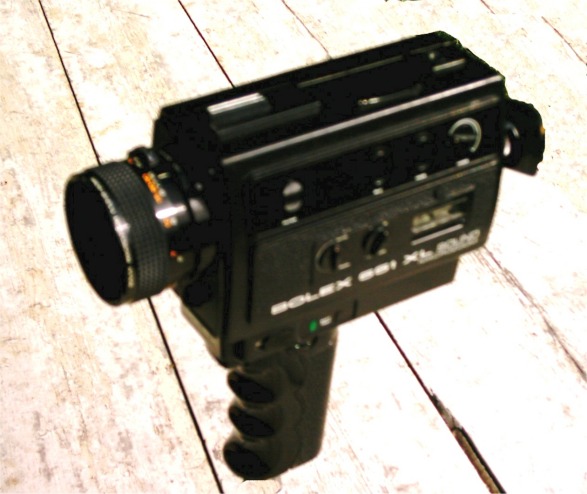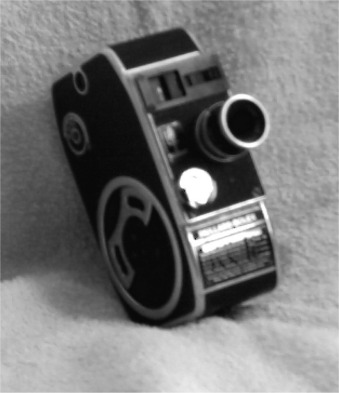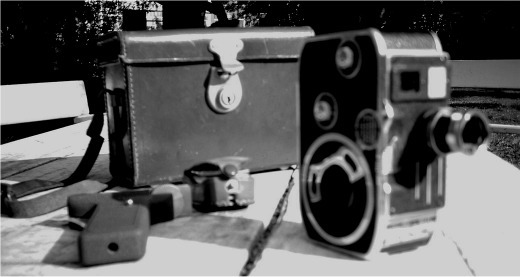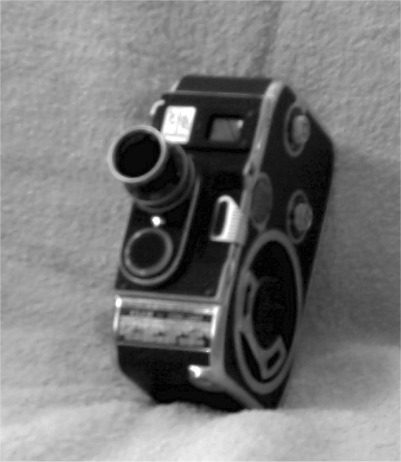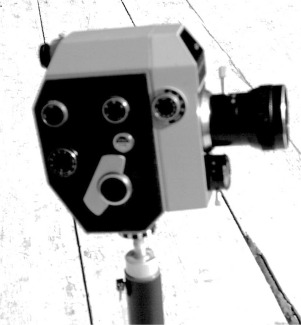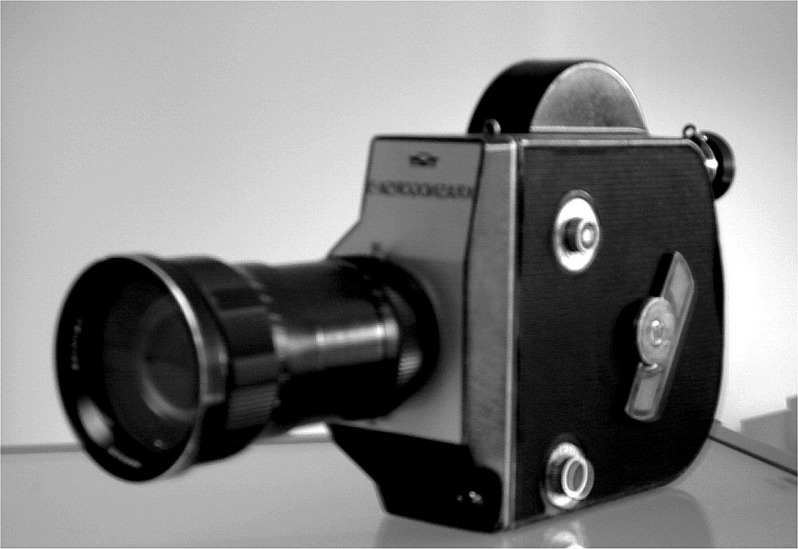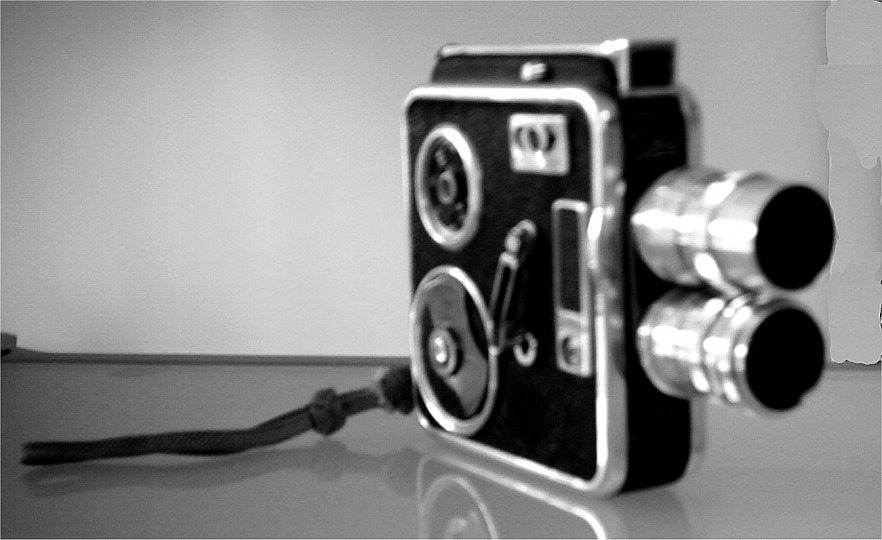
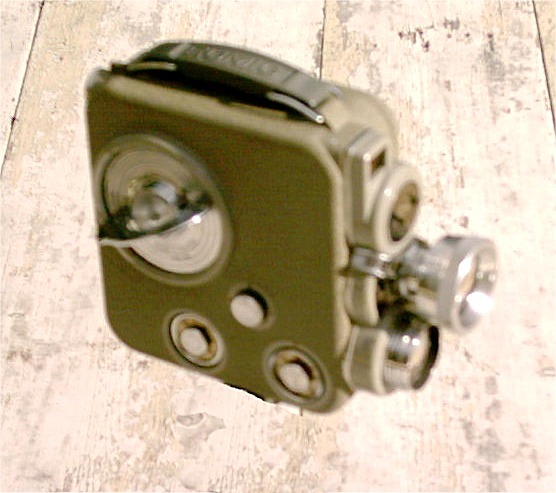
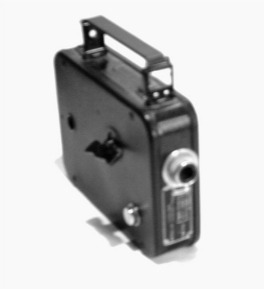
|
MEORTA ADMIRA A8 II
This is a double 8 camera, manufactured in Checkoslovakia 1957. A very
popular clockworkcamera that slightly reminds you of the Bolex H-series.
It has a winchester with two lenses (F2.8/12,5 mm and F3.5 35 mm) and the
framespeeds are 1-10-16-24-48-64.
EUMIG C3 (SCHNEIDER)
A nice clockwork camera from 1955. Two changeble lenses: Xenoplan F1.9
13 mm and Eumacro 2x. framespeed 1-8-16-32. Why these Eumigs not have 24
frames/s as a standard is a mystery for me.
CINÉ-KODAK 8 MODEL 20
This is the oldest camera in my collection. A 8 mm Kodak-model that
was manufactered in Great Britaint between 1932-46. It has a Anastigmat
lens (F1.9 / 13 mm) and speed fixed at 16 frames/s.
|
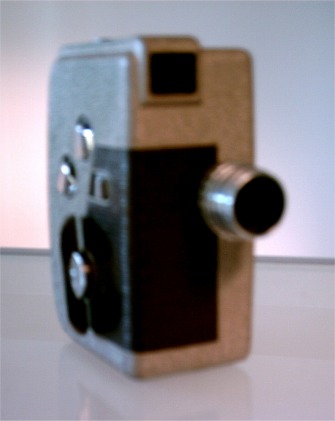
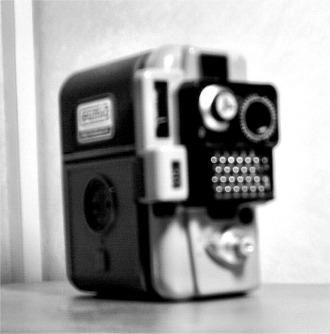
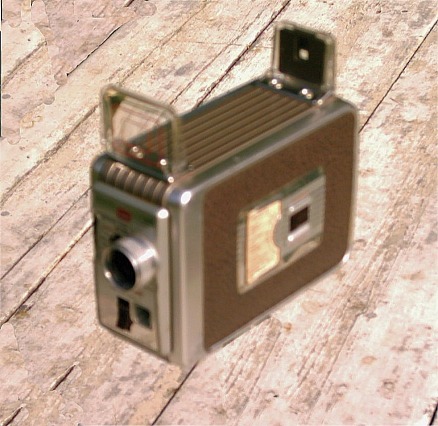
|
REVERE B 61 MAGAZINE
This is one of the first 8 mm cameras (manufactured between 1950-57
in USA) that use a magazine where the film is. It was an invention by the
Russian immigrant Samuel Briskin. I is also a very small piece (59 x 111
x 104 mm). Cine Raptar fixed lens F2.5 13 mm. Variable framespeed that
works with a clockwork: 1-12-16-24-32-48 frames/s.
EUMIG SERVOMATIC
This is one of the uggliest cameras I know and one of the first double
8:s that worked with batteries. The lightmeter works with a big solarlens
in the front.It was made in 1958 and has a Xenonplan fixed lens F1.8 13
mm. Only one speed: 16 frames/s.
KODAK BROWNIE
The Kodak Brownie 8 series is one the worlds most sold amateurmoviecameras.
It was cheap when it came out on the market and only in USA sold in several
millions items.
This piece was made between 1051-56, has a Kodaklens F2.7 13
mm and a fix speed at 16 frames/s. |
